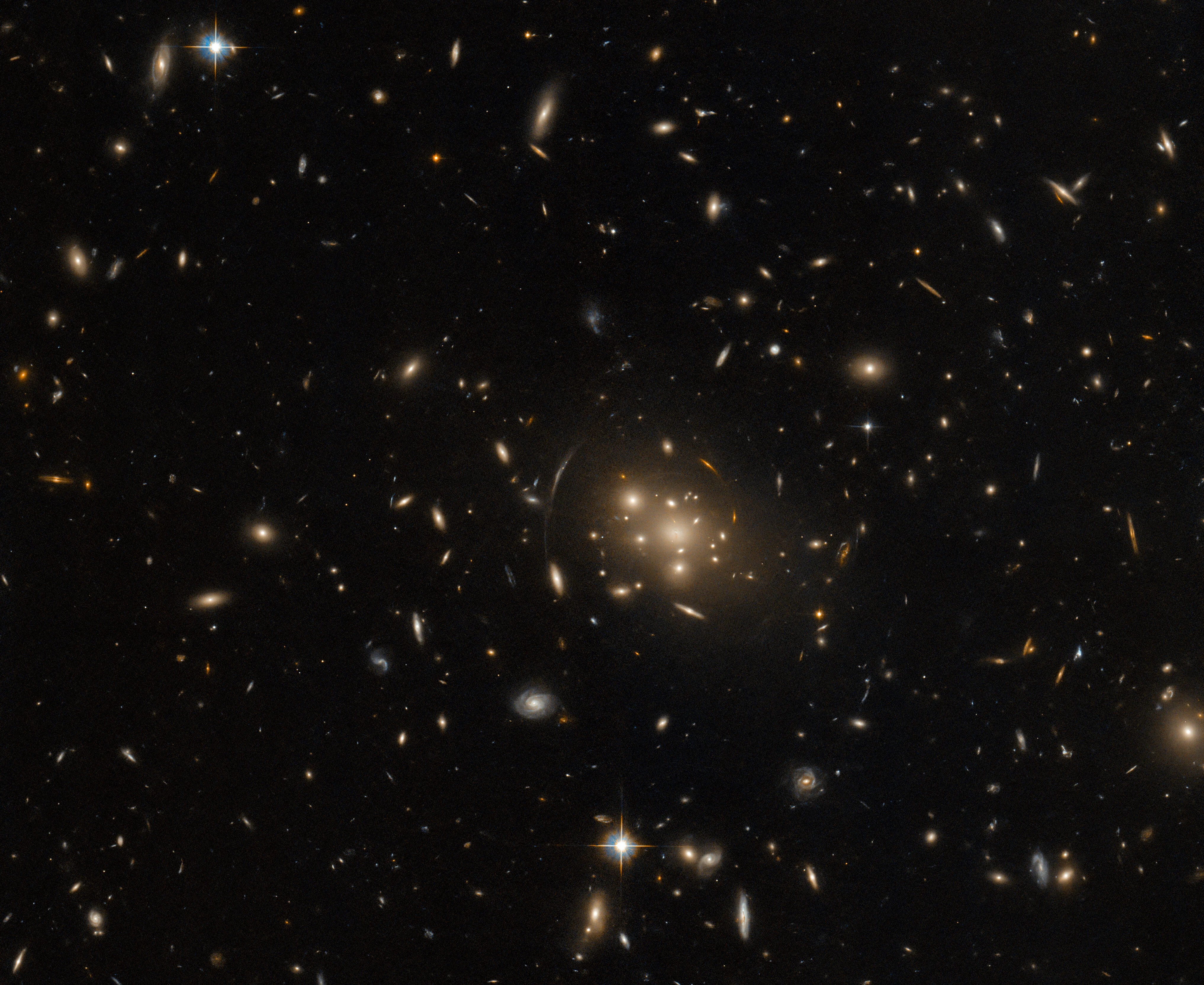1 min read

A massive galaxy cluster in the constellation Cetus dominates the center of this image from the NASA/ESA Hubble Space Telescope. This image is populated with a serene collection of elliptical and spiral galaxies, but galaxies surrounding the central cluster – which is named SPT-CL J0019-2026 – appear stretched into bright arcs, as if distorted by a gargantuan magnifying glass. This cosmic contortion, called a gravitational lens, occurs when the powerful gravitational field of a massive object like a galaxy cluster distorts and magnifies the light from background objects. These objects would normally be too distant and faint to observe, but the magnifying power of the gravitational lens extends Hubble’s view even deeper into the universe.
This observation is part of an ongoing project to fill short gaps in Hubble’s observing schedule by systematically exploring the most massive galaxy clusters in the distant universe, in the hopes of identifying promising targets for further study with both Hubble and the NASA/ESA/CSA James Webb Space Telescope. This particular galaxy cluster lies at a vast distance of 4.6 billion light-years from Earth.
Text credit: European Space Agency (ESA)
Media Contact:
Claire Andreoli
NASA's Goddard Space Flight Center, Greenbelt, MD
301-286-1940







